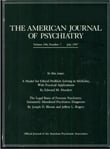Psychopharmacology today is a rapidly growing field as a result of the application of modern research tools leading to the development of new compounds targeting specific receptors in the brain. Consequently, a vast armamentarium of new therapeutic agents has emerged. This text addresses not only the neuroscientific basis of psychopharmacology but also the use of agents for the treatment of individual psychiatric disorders.
The first section of the book homes in on the fundamentals of psychopharmacology, covering neurotransmitters, receptors, and the target sites of drug action. The concepts of receptor structure, function, formation, and destruction are illustrated simplistically in an easy to understand fashion. I was especially impressed by the presentation of concepts related to the transporter carrier ion channels, which helped clarify some of my personal doubts. The concepts of down-regulation, up-regulation, and autoreceptor functioning also are presented in an easy to understand fashion. I found the illustrations especially useful in understanding the role of partial agonists, inverse agonists, and partial inverse agonists.
In the second section, the chapters on depression, antidepressants, and mood stabilizers are outstanding. The rationale for the use of norepinephrine and dopamine reuptake inhibitors like bupropion and serotonin and norepinephrine reuptake inhibitors like venlafaxine are well presented. All the current concepts are included, providing a wealth of information in these two chapters on mood disorders. The chapters covering antipsychotic treatments are well organized and illustrate the various dopaminergic pathways and mechanisms of drug action. Once again, the illustrations are extremely helpful in understanding the various mechanisms of drug action and production of side effects.
This high-quality, up-to-date psychopharmacology text is easy to understand and unique in its illustrations. It is available in both paperback and hardback. Typographical errors and misspellings are rare, and the editing and illustrations are excellent. The book has a strong focus on antidepressants, and some of the concepts are oversimplified. Overall, the information in this book is well organized and covers all aspects of psychopharmacology practice. There are other psychopharmacology textbooks, such as that of Hyman and Arana (
1), that are clinically oriented, but I have yet to see one that integrates the basic science with clinical applications in such a “user-friendly” fashion. This book would be useful for students, residents, psychiatrists, and primary care physicians who prescribe psychotropic agents on a regular basis.

